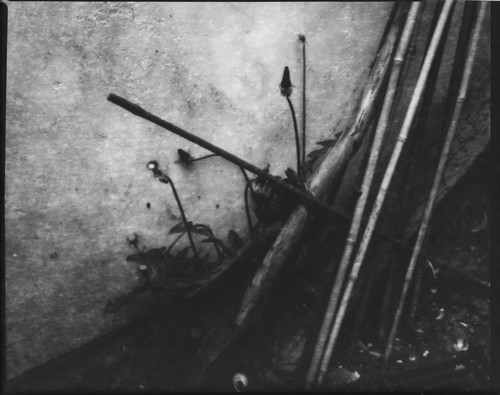 |
| Harman Direct Positive Paper |
Last weekend, for
Worldwide Pinhole Photography Day, I shot exclusively large format film and paper. Using a pinhole lensboard with my
MPP Micro-Technical camera provided more flexibility than the cardboard cameras I'd made
two years ago to shoot glass plates, four cameras constructed in two different sizes. In order to shoot more than just four pinhole photographs, I had taken boxes of plates and a changing bag with me to reload the cameras; the limit to using large format was how many 4x5 film holders I had. I made a pinhole using a piece of metal from a drinks can and rotating a needle to pierce it, fitting it behind a home-made lensboard. Measuring the hole by scanning it at maximum resolution gave a measurement of 0.2mm, although as I could only measure this down to one decimal place, it provided a margin of error to all other calculations. At a focal length of 150mm, this provides an aperture of f750. I shot some test photographs with this pinhole to find the
resulting images less sharp than anticipated, realising afterwards this was due to the diffraction effect provided by small apertures.
 |
| MPP Micro-Technical Mk VI with pinhole lensboard |
The website
Mr Pinhole has a useful table to help calculate an optimum pinhole size for a given focal length. At 150mm this was given as 0.5mm. Carefully enlarging the pinhole and measuring it a few steps at a time, produced a pinhole of 0.6mm. At 150mm, this would be f250; extending the bellows to 180mm would mean f300, both convenient round numbers. The lensboard could be placed anywhere on the triple extension of the MPP, but short focal lengths would mean a loss of detail due to too wide an f-stop (as well as showing the folding bed in the frame), and long focal lengths a loss of resolution due to diffraction again, as well as increasingly long exposure times. Ideally, one could make a number of pinholes with optimum sizes for a number of focal lengths, but I used one, mostly at a focal length of 150mm, with only a couple of shots at 180mm; it was easier to conceptualise each picture at a 'standard' angle of view as the ground glass couldn't be used.
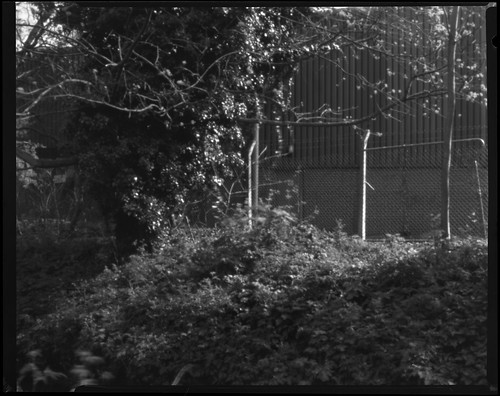 |
| Ilford FP4 with handwritten date '11/4/78', shot with 180mm focal length |
Initially, I had considered only using
Harman Direct Positive Paper, but after testing the paper the day before with rather mixed results, I decided to shoot film as well, using the FP4 and Plus-X from the 1970s that I'd shot on the recent
Expired Film Day (I did also shoot a handful of glass plates but found these harder than the Direct Positive Paper to get a decent image with the pinhole I had made). The Direct Positive Paper I shot was over five years old, and the developer I used, PQ Universal, was probably as old, if not older, an unopened bottle having been given to me some years ago. I developed the paper in a tank like film rather than in trays, so I wasn't able to inspect the process, but even with developing times around ten minutes, the darkest tones never quite got dark enough. In addition, getting the exposure right with Direct Positive Paper is difficult enough given its high contrast, compounded by rapidly changing lighting conditions in the morning, with broken clouds moving quickly across the sky, as seen in
this shot on FP4 with an eight second exposure.
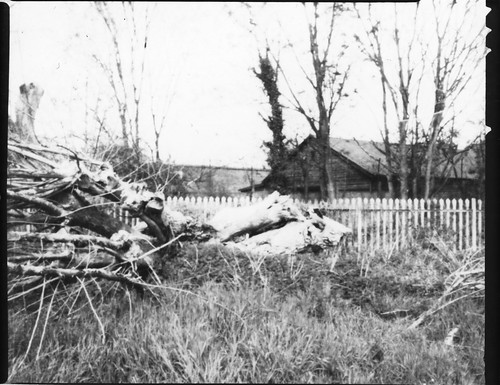 |
| Harman Direct Positive Paper |
With relatively long exposures at an aperture around f250 and shooting the paper with an exposure index of 3, a number of shots were complicated by the light changing
during the exposure itself: with exposure times in full sun calculated at around 90 seconds, I had a more than one shot when part-way through an exposure, the sun would disappear behind a cloud, and I had to try to re-calculate how much to extend the exposure with the light levels dropping three or four stops, as in the image above, and mostly erred on overexposure, with which the paper very quickly loses all highlight detail.
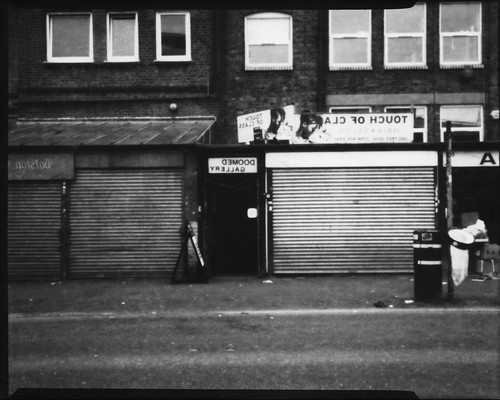 |
| Harman Direct Positive Paper |
Later in the day, conditions became overcast, which made using the Direct Positive Paper easier, not only with more consistent lighting, but also being inherently lower contrast. The images above, and at the top of this post, were taken in such lighting. The Direct Positive Paper does give a reversed image, which might mean avoiding shots with lettering being prominent; I shot the exterior of
Doomed Gallery as I had an exhibit in the London Alternative Photography Collective exhibition over the weekend as part of the
London Pinhole Festival - glass plate positives of the negatives shot on Worldwide Pinhole Photography Day two years ago. I also made
another exposure on FP4 film as a comparison. As well as exposures in seconds rather than minutes, using film, even out of date film rated 64 and 25 for the FP4 and Plus-X respectively, both film's latitude and reciprocity failure helped achieve more consistent results.
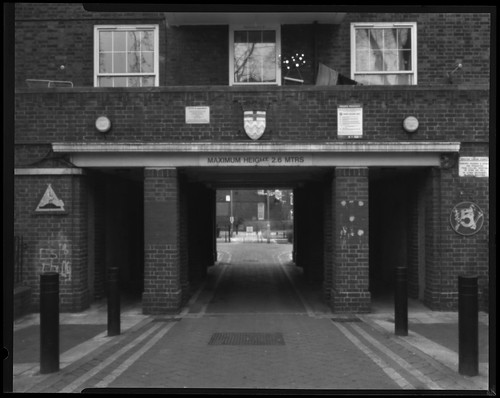 |
| Ilford FP4 with handwritten date on the box '11/4/78' |
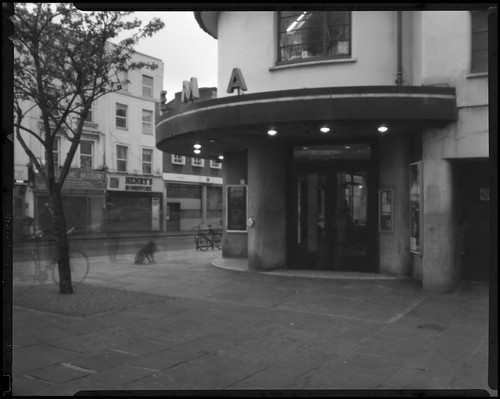 |
| Kodak Plus-X, develop date before July 1972 |
See the whole set of pinhole photographs here.







No comments:
Post a Comment